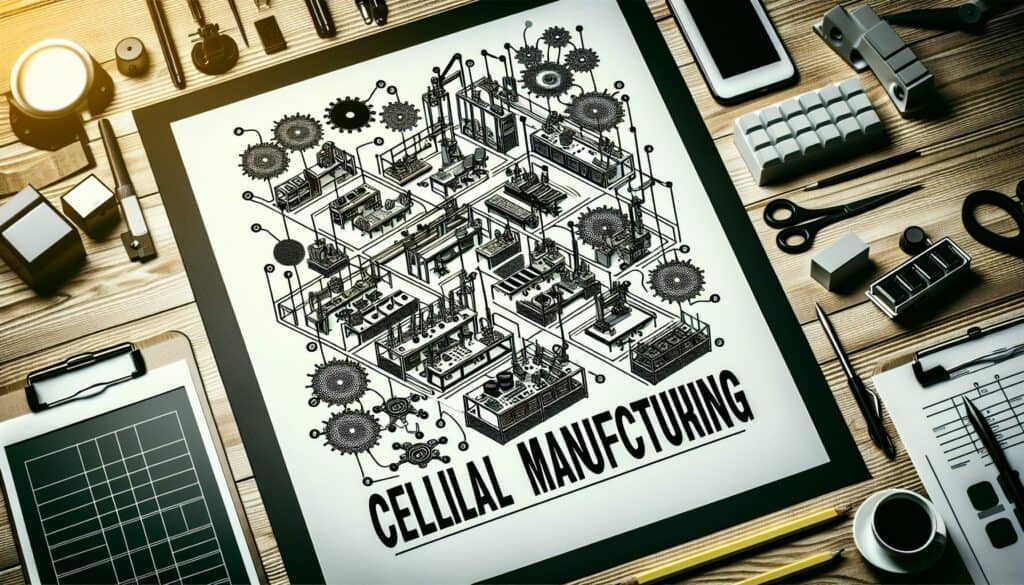通过将不同的机器组合成单元,让它们加工具有相似加工要求的产品(零件系列),从而提高生产效率。
- 方法: 客户与营销, 经济学, 精益西格玛, 制造业, 项目管理, 质量
细胞制造

细胞制造
- 持续改进, 准时制(JIT), 精益制造, 流程改进, 生产效率, 质量管理, 价值流映射
目标
如何使用
- 工作站和设备按顺序排列,使材料和部件在生产过程中顺畅流动,尽量减少运输和延误。一个单元负责生产一系列相似的部件。
优点
- 减少在制品库存、交付周期和材料处理;提高灵活性、工人士气和质量;节省工厂空间。
缺点
- 实施成本可能很高(重新安排设备、培训);需要仔细规划和确定部件系列;如果平衡不当,单元内机器的利用率可能会降低;如果单元内的机器出现故障,则容易发生故障。
类别
- 精益西格玛, 制造业, 产品设计
最适合:
- 通过创建专门的、重点突出的生产单位,提高多品种、中低产量生产的流程和效率。
Cellular manufacturing is particularly effective in industries such as automotive, electronics, and appliance manufacturing, where product lines often consist of a variety of components requiring customized assembly processes. This methodology is most beneficial during the design and development phases of new products, where early collaboration among engineers, designers, and production teams can lead to more efficient workflows. The implementation of cellular manufacturing typically begins with a thorough analysis of the product family to identify similarities and group related components, which enables the design of cells that can efficiently deal with variations in production. Participants including production supervisors, quality assurance personnel, and manufacturing engineers are crucial in defining the specific tasks and responsibilities within each cell. This collaborative approach not only enhances communication among team members but also fosters a sense of ownership and accountability, leading to improved worker morale. Furthermore, the layout of the production area can facilitate better ergonomic practices and minimize operator fatigue, which in turn translates to higher quality outputs and lower defect rates. Companies that incorporate cellular manufacturing may use techniques such as just-in-time inventory and 精益原则 to further enhance productivity, thereby reducing costs associated with excess inventory and prolonging lead times. Continuous improvement initiatives, like 改善, are often applied alongside cellular manufacturing, allowing teams to regularly assess and refine their processes to stay competitive in fast-paced markets.
该方法的关键步骤
- Identify the family of similar parts to be produced.
- Design the cellular layout considering the workflow and space efficiency.
- Group equipment and workstations based on the sequence of operations needed.
- Assign team members to specific roles within the cell based on skill sets.
- Implement standardized work procedures for each operation within the cell.
- Establish visual controls and tools to monitor workflow and quality.
- Conduct regular reviews and adjustments based on performance and feedback.
- Train staff on cell operation and encourage cross-training for flexibility.
- Iterate designs and processes based on efficiency metrics and product quality.
专业提示
- Analyze process flow regularly to identify bottlenecks and balance workloads across workstations for optimal efficiency.
- Implement cross-training for workers to enhance flexibility, allowing easy movement between tasks and cells as demand fluctuates.
- Utilize performance metrics to assess cell effectiveness continuously, adjusting layout and resources based on real-time production data.
历史背景
1949
1950
1950
1960
1960
1960
1960
1940
1950
1950
1958
1960
1960
1960
1960
(如果日期不详或不相关,例如 "流体力学",则对其显著出现的时间作了四舍五入的估计)。















相关文章
肌肉骨骼不适调查表
多变量测试(MVT)
多元回归分析
动作捕捉系统
MoSCoW 方法
情绪中值测试